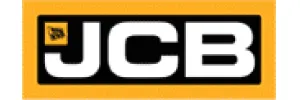News & Insights
Read the latest news from us and our clients across the globe

Posted on 18 May 2016 by adtrak.admin
Let’s talk telehandlers
Chris Cox, JCB’s General Manager for the waste and recycling sector, looks at why telescopic handlers (telehandlers) are popular machines for tough recycling environments, and what to consider when investing in one.
 JCB knows that recycling businesses need versatile machines that can handle a large variety of tasks, manoeuvre well in tight spaces, and provide maximum efficiency throughout the working day; that’s why it provides the widest range of waste and recycling machines.
JCB knows that recycling businesses need versatile machines that can handle a large variety of tasks, manoeuvre well in tight spaces, and provide maximum efficiency throughout the working day; that’s why it provides the widest range of waste and recycling machines.
Why a telehandler?
Telehandlers were originally developed for use in construction and agriculture, but they have now become a valuable addition to recycling and waste management sites. The main feature of the machine is its telescopic boom, which can handle a multitude of different attachments, thereby enhancing its range and its flexibility. This allows the machine to be used for a number of different tasks in facilities ranging from transfer stations to MRFs.
JCB first pioneered the concept of telehandlers nearly 40 years ago with the introduction of their very first ‘Loadall’. Since then, the renowned Loadall range has grown and developed significantly. The ability to carry, lift and place materials, such as bales or bulk material or even load high sided trailers and hoppers, has been a real advantage to a number of different recycling sectors.
What to look for in a telehandler
Whether a telehandler is to be used on a single site or across a number of sites, it is essential to assess the expected workload. The tasks that ask the most of the machine, and which will be carried out most frequently are the ones that need to be considered carefully when choosing the appropriate model.
The type and density of materials to be handled, the containers to be loaded, along with any space constraints when undertaking tasks will help decide on the final choice of machine size.
The most important thing to establish is exactly what machine will be expected to do, the volume of material to be moved and how much space is available to do it. When you have machines that range in size from compact models (ideal for accessing restricted bays and doorways) to much more substantial machines with up to a generous 6-tonne payload, as you do with telehandlers this is no idle consideration.
When do you need a telehandler?
Well, a telehandler’s most obvious attribute is its telescopic boom. This gives the machine excellent reach capabilities which is a huge asset when good ‘load over’ height is required or when safely stacking material. The largest JCB Wastemaster Loadalls offer up to 8 metres of lift height – more than enough to load the highest bulkers. Another important attribute of the telescopic boom is the forward reach it gives the machine, tasks like ‘destuffing’ containers are easier with a telehandler. The largest Loadall also comes with a massive 6,000kg of lifting capacity.
The majority of waste and recycling sites would benefit from the addition of a telescopic handler to the machine fleet, thanks to telehandlers’ huge versatility. General duties, such as collecting spilt materials and refuse or sweeping and pallet handling can also be performed with ease.
Three things to think about:
- Flexibility
Telehandlers are flexible and efficient. They can be used with a vast array of attachments – from buckets and forks to waste clamps and bale grabs. Waste clamps are available in a variety of sizes and usually offer fully enclosed hydraulic cylinders to protect them from damage. Bucket attachments should come with reversible, bolt-on toe plates so that worn edges from continuous use can easily be changed rather than having to replace the whole attachment. Also, if a wide range of attachments is to be used, a quick-hitch carriage is imperative as it allows fast, simple and safe changeover.
- Tough enough for the task
Recycling and waste management sites are tough working environments so equipment or machinery to be used there needs to be up to task, which is why JCB developed its specialist Wastemaster range. Many manufacturers install extra guarding for the cab and lighting, but also look for underbelly protection, fuel tank guards, cooling-pack protection and puncture proof tyres to make sure the machine is up to the job.
Look for a machine offering a one-piece, fully-welded chassis so that it is heavy, strong and robust. The fewer joints and stress points the better as the overall result is a much more robust machine. Generous boom overlaps also provide maximum rigidity and durability while the boom is extended.
Hydraulic hoses should be routed inside the boom as this protects the hoses from damage.
JCB takes a totally integrated approach to the manufacture and assembly of machines to enhance their durability. Engines, transmissions, axles, hydraulic architecture and cabs are all designed and built in-house so that they all work seamlessly together, meaning there is no compromise on performance and parts supply and serviceability are optimised
- Operator comfort
It is important to consider operator comfort if the most effective and efficient use is to be made of a machine. The operator may well spend their whole day in the cab so, ideally, the cab should be designed with the maximum thought around ergonomics ensuring that high levels of comfort are delivered.
Features such as fully adjustable suspension seats and steering columns, air conditioning, strategically-positioned air vents and adequate storage can all enhance the operator experience. All dials and switches should be ergonomically positioned on the console and grouped in a way that encourages intuitive use. This not only helps in efficiency terms but also offers health and safety benefits.
Visibility is crucial, for the safety of the operator and anyone around them. Large cab and roof windows will help to provide an optimum all-round view, including upwards and rearwards (over the shoulder). Angled window bars protect the operator and maintain lines of sight, while having a telescopic boom instead of a forklift mast means nothing blocks the operator’s view.
Maximum efficiency
For maximum efficiency it is always important to identify the best machine for the job. The benefit of the adaptable telehandler is that it won’t be limited to just one job. On the contrary, with one of these machines on your fleet you can reach new performance heights.
Published in www.recyclingwasteworld.co.uk April 2016
Experts in Public Relations Services & Communications Management
Our ServicesGenuine industry specialists in cleaning and hygiene, environmental and recycling, and facilities management
Our Sectors












